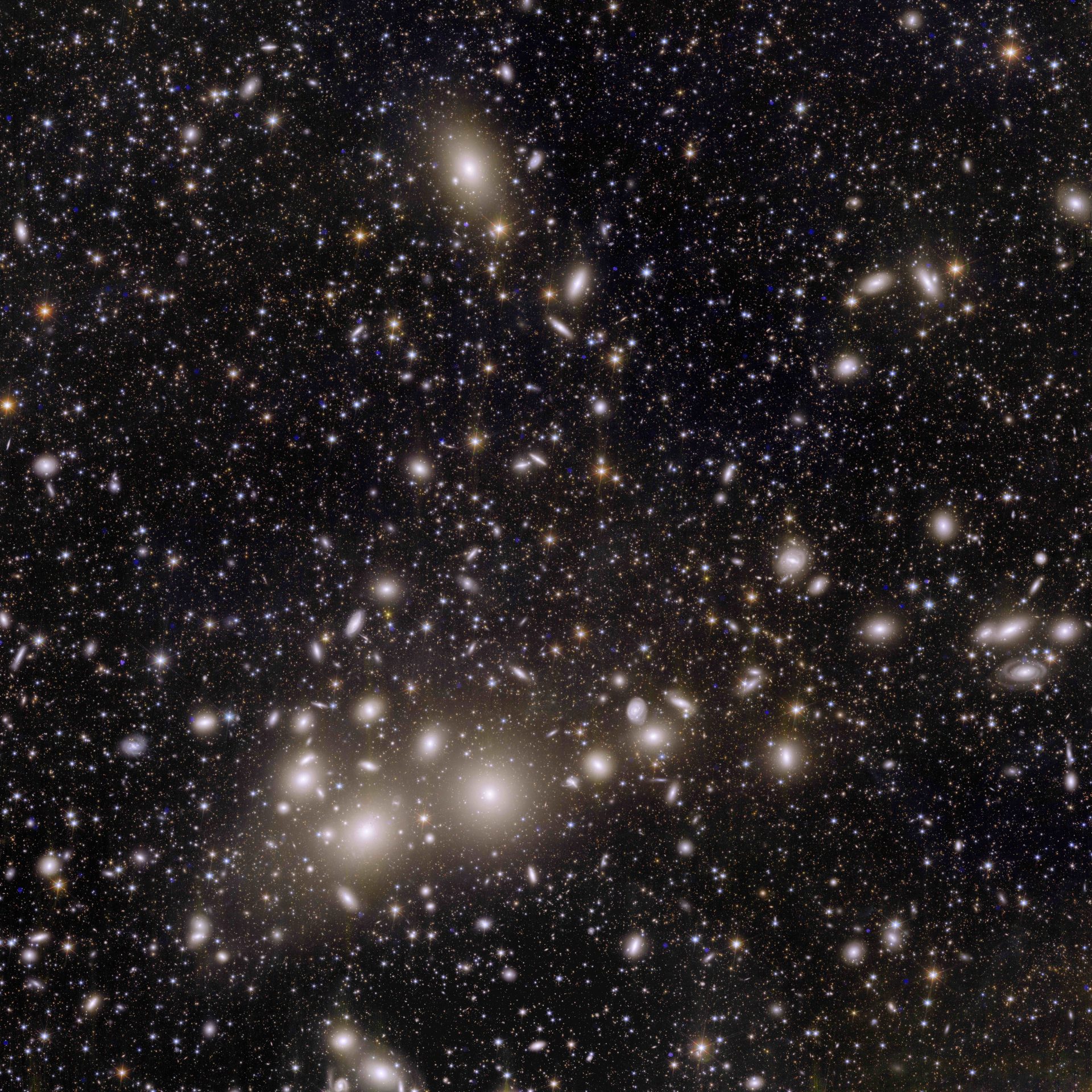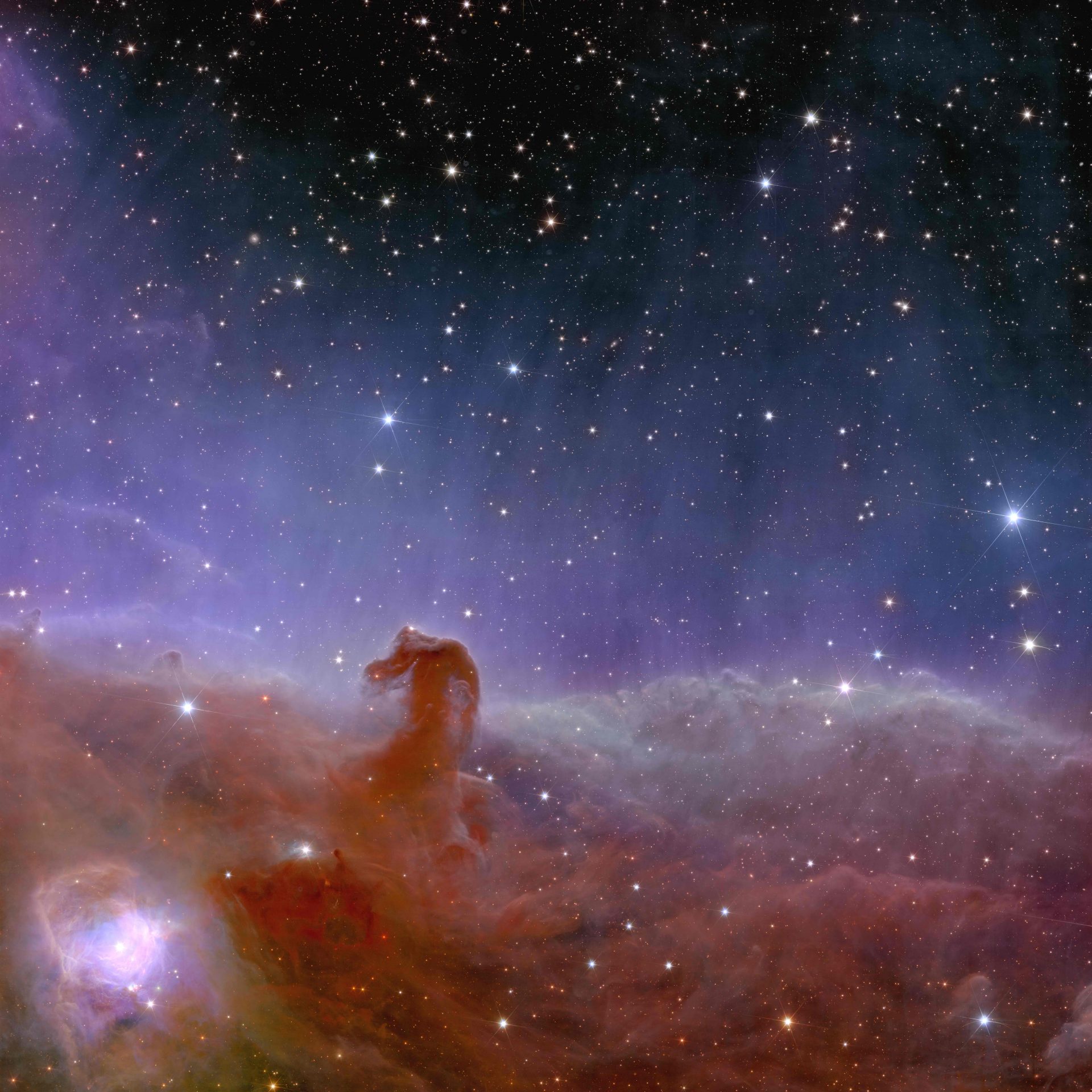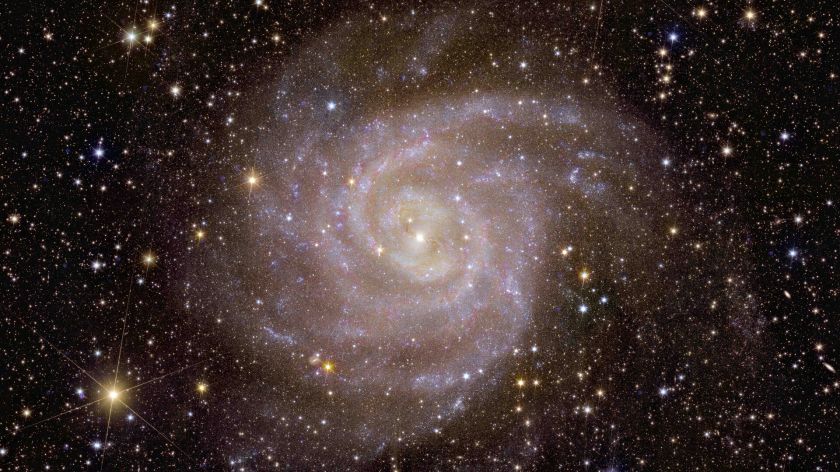New European space telescope delivers promising photos of distant and nearby galaxies
-
Euclid’s view of spiral galaxy IC 342. ESA/Euclid/Euclid Consortium/NASA, image processing by J.-C. Cuillandre (CEA Paris-Saclay), G. Anselmi, CC BY-SA 3.0 IGO
On Tuesday, the European Space Agency presented the Euclid space telescope’s first pictures of the cosmos. Never before have photos of the universe been so sharp. Five questions for associate professor Astrophysics Søren Larsen, who is involved in this European research project. ‘We want to understand the dark universe.’
#1. What is the importance of the first pictures, taken by the Euclid telescope that were released yesterday?
Søren Larsen: ‘It demonstrates that the Euclid telescope, which was launched in July, really works. The five images that were released yesterday show that Euclid is ready to do what it was set out to do. In the next six years, it’ll build a map of other galaxies, based on its observations. It will show where the galaxies are located, but it will also tell us more about dark matter and dark energy (see question 4, ed.). The first images also have scientific value: scientists are already analyzing them and they will write articles about it.’
#2. What can we see on the images?
Larsen: ‘The main thing that Euclid will study are distant galaxies and the structure of the universe. But as you get closer and closer, you start to see more details. You really get to see all the dwarf galaxies as well, not just the big ones. That’s one of the major questions that we are trying to understand: how many small and big galaxies are out there? And what does that tell us about how galaxies form?’

ESA/Euclid/Euclid Consortium/NASA, image processing by J.-C. Cuillandre (CEA Paris-Saclay), G. Anselmi, CC BY-SA 3.0 IGO
‘In one of the pictures there is a spiral galaxy, the so-called hidden galaxy IC 342, which looks a bit like our galaxy, the Milky Way. The Euclid Telescope’s picture is sharp enough to really see the individual stars in that particular galaxy. Another image shows a star cluster that belongs to our own galaxy. And we can even detect those kinds of clusters in the more distant galaxies.’
#3. What is your contribution to this project?
Larsen: ‘The main goal of Euclid is to run this cosmology study and to understand the dark universe. Thanks to the telescope, however, we will not only get pictures from distant galaxies, but also from nearby ones. I’m co-leading a science work group, called Milky Way and Resolved Stellar Populations. We are studying the Milky Way – our own galaxy – and some other nearby galaxies where you can still see individual stars. Our main interest is to understand these nearby galaxies.’
#4. What makes the Euclid research so important?
Larsen: ‘Our research is crucial because it dives into the fundamental understanding of how nature operates. It’s intriguing to consider that everything we observe in our surroundings constitutes only a very small fraction – perhaps 5 percent – of the total composition of the universe. Beyond that, we know of the existence of enigmatic dark matter. Currently, we are capable of discerning its presence, but comprehending its true essence proposes a challenge. Through careful observation of celestial objects and their interactions, we can ascertain the masses of specific galaxies by studying the movements of stars within them. This reveals that galaxies are much more massive than what meets the eye.’

ESA/Euclid/Euclid Consortium/NASA, image processing by J.-C. Cuillandre (CEA Paris-Saclay), G. Anselmi, CC BY-SA 3.0 IGO
‘Moreover, there’s the enigma of dark energy, which introduces a new dynamic. It suggests that the universe is not only governed by gravity, but also experiences a repulsive force that propels its acceleration. When you throw something up in the air, it starts off really fast, but then it slows down and comes back to earth. In the same way, one might expect that the gravitational attraction between galaxies would start pulling them together and the expansion of the Universe would slow down. Instead, it just expands faster and faster. This raises profound questions about the underlying physics, for which we don’t yet have answers.’
‘Why we should invest in unraveling these mysteries, is of course a pertinent question. We can’t always predict the future applications of fundamental discoveries. But today, we rely on radio and microwaves because we studied electromagnetism in the 19th century.’
#5. Do you already have posters from the first images in your home?
Larsen: ‘Not yet. But if ESA is releasing them, I sure would like to get one. I already have shown the pictures to my kids and family and they were very excited about it.’
Article by Ken Lambeets





